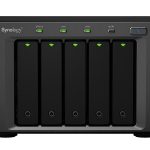 Managing your digital media in this age is rather daunting. A lot of people have ditched their iTunes libraries and gone to the subscription music service model. Some of us still have huge libraries of music. All those recordings you made in college, or those boot legs of various bands you got. Or teaching materials you have acquired over the years. You have a library of stuff. But how do you manage it?
Managing your digital media in this age is rather daunting. A lot of people have ditched their iTunes libraries and gone to the subscription music service model. Some of us still have huge libraries of music. All those recordings you made in college, or those boot legs of various bands you got. Or teaching materials you have acquired over the years. You have a library of stuff. But how do you manage it?
Part 1 – Storage
For me, I’ve always had some sort of redundant system for storage. You need a redundant storage system, be it one hard drive cloned to another, or something. DO NOT KEEP EVERYTHING ON ONE DRIVE…..Drives fail…..then your stuff will disappear. From 2000 to 2008(?) I had a PC I inherited from a failed high tech startup that had a RAID 5 drive array. Basically, it takes your data and puts it across 3 or more drives in a way that if ONE drive fails, you can replace that drive and it will rebuild itself and you do not lose any data. And did a backup of this to a large USB hard drive. So TWO copies my digital assets.
When 2008 came around, I decided to replace the hot and loud PC with a NAS (Network Attached Storage). It’s a little computer basically that does RAID and just serves out files to you. This worked great for several years, and in 2012 I upgraded to another NAS that has more space and expansion abilities (and aggregated gigabit ethernet).
I also adopted better backing up strategy. Three copies. There is the copy that lives on the main NAS, a copy on an external USB Hard drive, and a copy on a remote NAS. So, in theory, if the main NAS dies, then I can rebuild it with the USB hard drive copy. If say a comet strikes and I lose the NAS and the USB drive, then the remote NAS is the one that has the stuff.
This has worked fairly well. Partly cause the NAS I have is solid (Synology). However, cloud backup is real appealing. Things like Amazon Glacier and BackBlaze offer really cheap ways to cloud backup stuff. Probably be adding this in this summer (as the Synology has programs that do this…..love the Synology).
So, having something redundant and backup is essential to any musicians library.
Part 2 – Access
Having your stuff Digitally is awesome. Having all your books as PDFs, or sheet music as PDFs where you can put them on your iPad or whatever. It is amazing. But what if you are unable to store everything on an iPad? What if you need to look up a song, or need a PDF that isn’t on your iPad? This is where the cloud and a good NAS come in.
The Synology, and most other NAS makers, have applications that can sync up parts of your library to “the cloud”. This could be DropBox, or Google Drive, or whatever. So if you need access to your PDFs a lot, you can have the NAS maintain a copy on Google Drive. Or Dropbox. Or several other services. Syncing PDFs to Google Drive is great as you get access to the OCR features there, and you can do text searches of PDFs in Google Drive. You could also sync up music and videos, depending on how much cloud storage you have.
Most NASes also have apps that let you “stream” your library, sometimes over the internet. On the Synology, I can stream my music collection to an App on my phone. Or I can login into it and stream from a browser. It’s pretty cool.
Part 3 – Local Management
Ok, so you get part 1 and part 2 happening. But how to you manage the stuff in there. iTunes works…..up to a point. iTunes starts getting exponentially slower as the size of your library grows. At some point, you will be waiting FOREVER, for iTunes to do anything.
Currently, I am using MediaMonkey on the PC to manage most of the stuff. It is great. And more importantly, it is FAST. It scans the path on the Synology for anything that has changed, and updates it in it’s library. I SOOOO wish iTunes did that….would scan for changes. For the PDFs, I am doing that still on the Mac with DevonThink Pro.
Conclusion
I think the biggest thing to take away is that you need to take care of your digital assets. Backups are key. If you can’t afford a RAID enabled device, then at the minimum have a CLONE of whatever drive you have the stuff on. Then, consider putting some of that in the cloud for access and backup. Finally, don’t use iTunes to manage your stuff…..especially if you have a LOT of stuff.